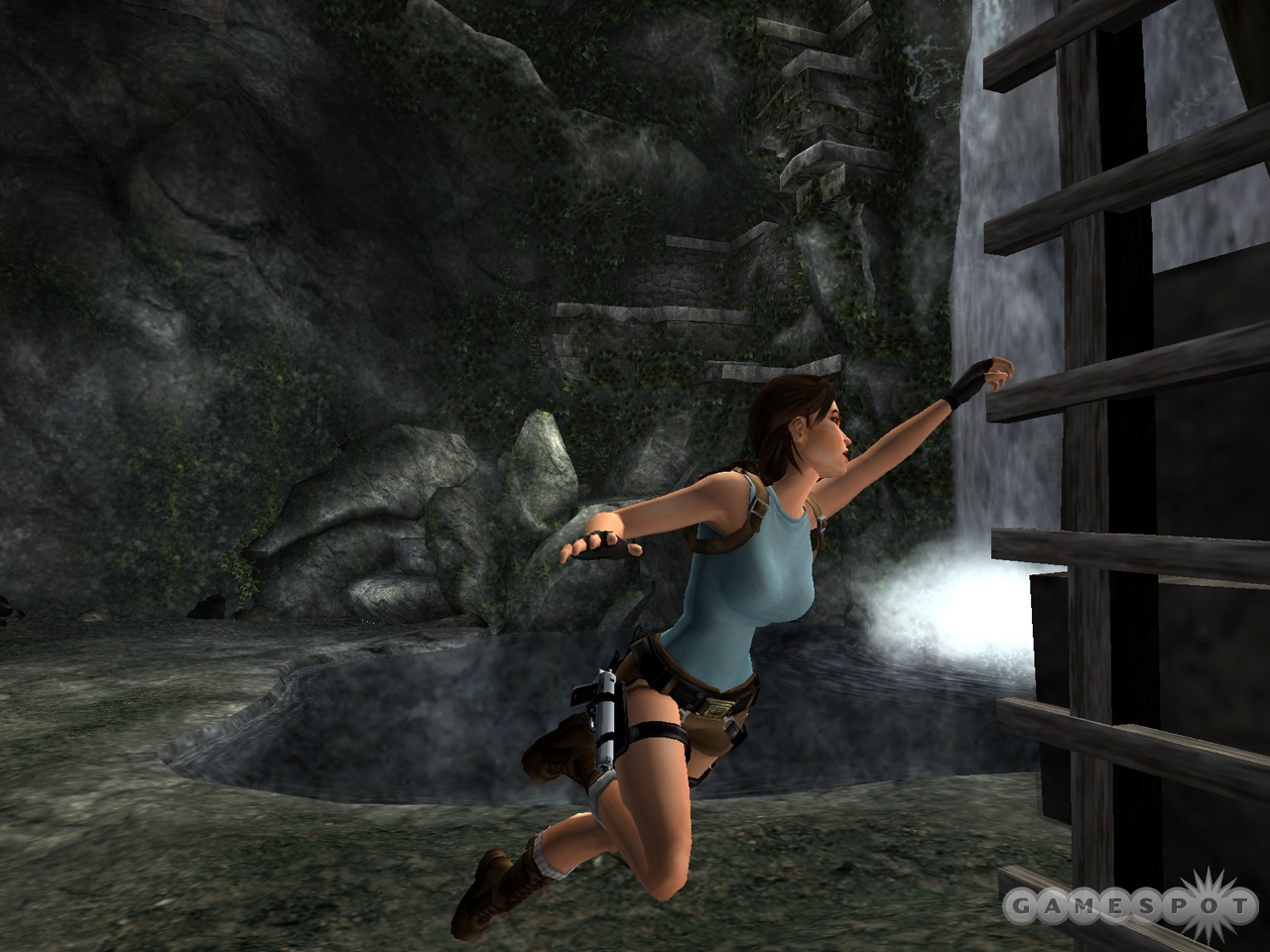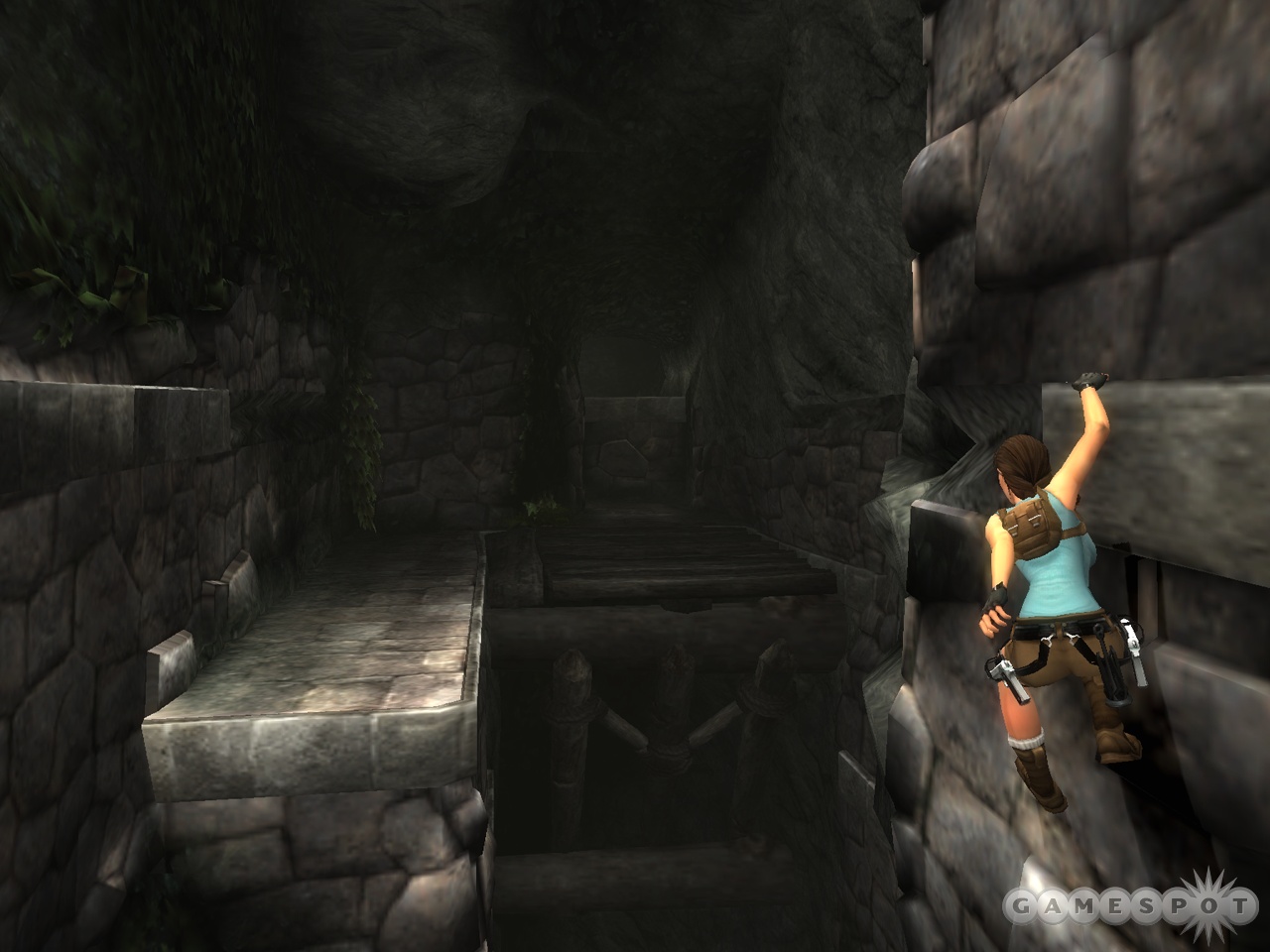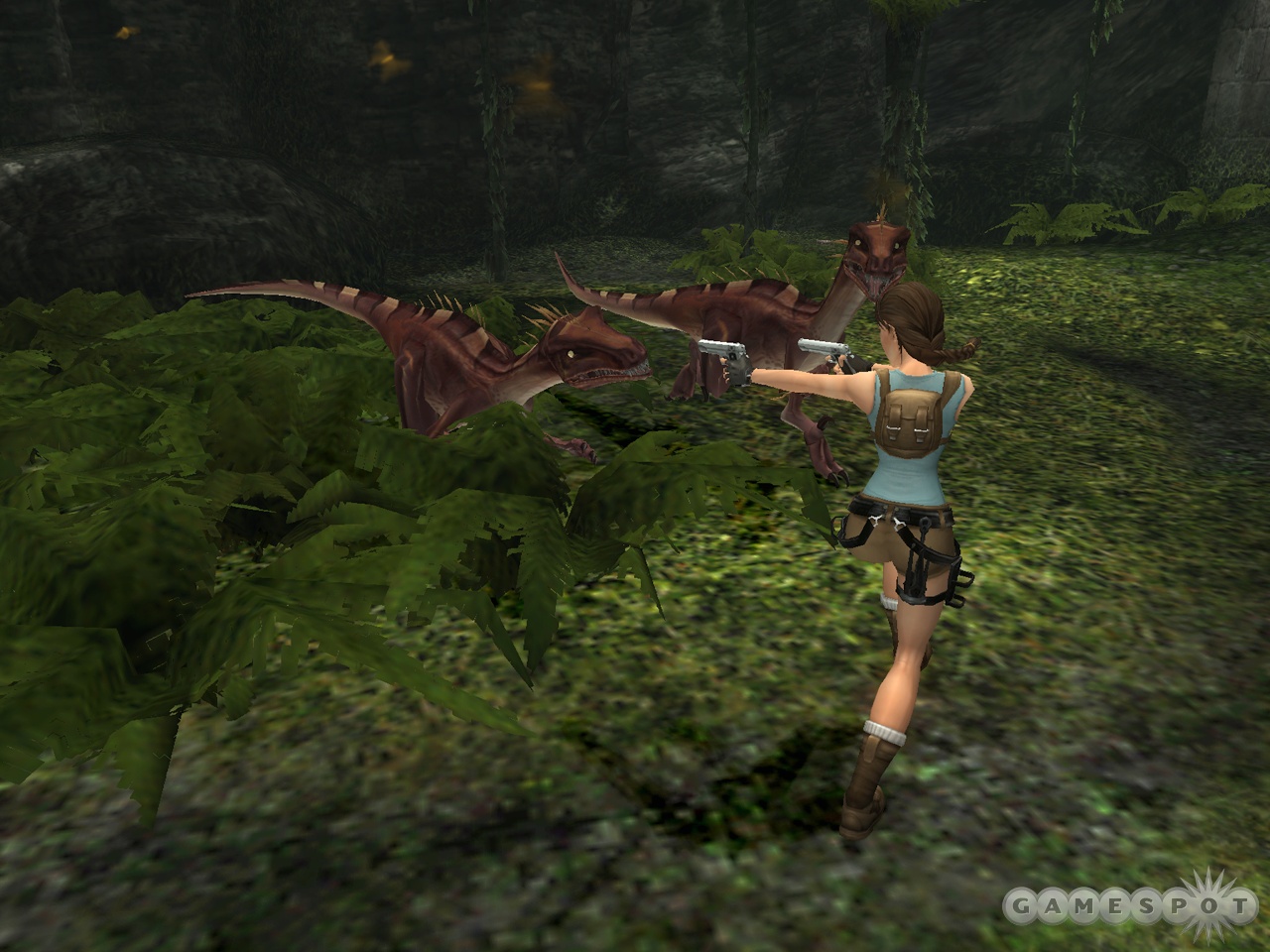Tomb Raider: Anniversary Q&A - Demo Details, General Game Updates
Get the details on the new demo and more updates on the general game.
The classic Tomb Raider third-person action series launched the career of Lara Croft more than 10 years ago, and now, publisher Eidos and developer Crystal Dynamics are going back to Miss Croft's roots with a remake of the original game from 1996. GameSpot is premiering the demo version of the game, which you can download here, and we have new details on what's in the demo, as well as what's planned for the final game, from executive producer Matthew Guzenda.
GS: Let's talk about the demo. What level are you showcasing, and where was it taken from in the game? Can you give us some setup as to what's going on?

Matthew Guzenda: The demo starts at one of my personal favorite spots from the first game, which was the waterfall in the first level. This is about a third of the way through the first level, which is set in Peru. Lara's there searching for part of an ancient artifact called the Scion.
GS: How long is the demo to play through, approximately? How difficult is it compared to the other levels in the game? Are there any hints or tips that you feel you should give the audience at this point?
MG: The demo will probably take the average player about 20 minutes to play, although there are several hidden items throughout the level which will take the player much longer to find. It's pretty early in the first level, so we're not too rough with the player at this point. The puzzle by the waterfall is a three-stage puzzle, but you really only need to complete one stage to reach the end of the demo. In order to finish the demo, you don't need to climb to the top of the waterfall, but I encourage players to go up there first, as there are several goodies hidden there. Also, who doesn't want to swan dive off the top?
GS: What are the system requirements for the demo? What do you recommend to play the game with?
MG: The minimum system requirements are as follows:
Minimum Specification
OPERATING SYSTEM:
Microsoft Windows 2000, XP, Vista
CPU:
Pentium 3 1.4GHz or Athlon XP 1500+
RAM:
256MB (for Windows 2000/XP)
512MB (for Windows Vista)
GRAPHICS:
100% DirectX 9.0c compatible 64MB 3D Accelerated Card with TnL (GeForce 3Ti/Radeon 9 series)
SOUND:
Microsoft Windows 2000/XP/Vista compatible sound card (100% DirectX 9.0c compatible)
DVD-ROM:
Quad-speed (4x) DVD-ROM drive
HARD DRIVE:
4GB free disk space
INPUT DEVICES:
100% Windows 2000/XP/Vista compatible mouse and keyboard
The recommended system requirements are as follows:
Recommended Specification
OPERATING SYSTEM:
Microsoft Windows XP, Vista
CPU:
Pentium 4 3.0GHz or Athlon 64 3000+
RAM:
1GB RAM
GRAPHICS:
100% DirectX 9.0c compatible 64MB 3D Accelerated Card with Vertex Shader 2.0 and Pixel Shader 2.0 (GeForce 6000 series/Radeon X series)
SOUND:
Microsoft Windows XP/Vista compatible sound card (100% DirectX 9.0c compatible)
DVD-ROM:
Quad-speed (4x) DVD-ROM drive
HARD DRIVE:
4GB free disk space
INPUT DEVICES:
100% Windows XP/Vista compatible mouse and keyboard/Xbox 360 controller for Windows

GS: Let's talk about the game itself. What was the reasoning behind remaking the original Tomb Raider as opposed to simply making a new Tomb Raider game, especially considering that the amount of effort to remake the original was probably the same amount required for a new game?
MG: Tomb Raider: Anniversary really is about celebrating the series. We thought the best way to celebrate 10 years of the franchise was to go back where it all began and to remake the first Tomb Raider game. Technology has moved on in 10 years, and we thought that it would be a compelling gaming experience to re-create the original game from the ground up, taking advantage of today's tech.
GS: This isn't simply a straight remake, as you had to flesh out existing puzzles and create whole new ones for the game. What was the philosophy behind what content to keep from the original and what to basically rewrite from scratch?
MG: We wanted to keep themes from the original game even though we were building all-new content. For instance, the puzzle in the demo keeps the theme from the original game; it revolves around finding cogs for a mechanism tied to the waterfall. Each cog activates a portion of the puzzle. Using the movement system, you then have to interact with the moving puzzle to work yourself up to the top of the cliff. The original game had the cog puzzle, but there was none of the movement challenge or interaction with the puzzle, as there wasn't a physics system. We spent a lot of time identifying the memorable bits from the original game and trying to re-create them, taking advantage of game systems that we have now. In the end, our objective was to take inspiration from the original game and create a new Tomb Raider adventure that would deliver a sense of nostalgia, but also a really exciting and compelling Tomb Raider gameplay experience.
GS: We understand that there's a greater emphasis on story in the remake, mainly because the original glossed over the story for the most part. How did you enhance the story, and what other aspects of the original did you have to fix or address?
MG: The original story was pretty sparse. We used this as an opportunity to clarify some of the points that were pretty abstract in the original game. We also wanted to tie in the original storyline with the storyline that we started in Tomb Raider: Legend.

GS: It looks pretty primitive now, but the original Tomb Raider looked amazing in its day. Could you give us a comparison of the technical differences between the original and the remake? For instance, how many polygons were there in the original Lara Croft, and how many are there in the remake version?
MG: Graphics technology has come a long way in 10 years. I don't have exact numbers, but I think the original Lara was built with about 300 polygons, while the current model has about 5,000. The memory footprint for just Lara in the current game is more than the entire memory footprint for the original game (environment, Lara, and sounds).
GS: Tomb Raider II was an even bigger commercial and critical hit than its predecessor, and there are undoubtedly many fans who would like to see that sequel get the remake treatment. Are there any thoughts or plans to this effect, or will we see a whole new Lara adventure next?
MG: We left a lot of unanswered questions in Tomb Raider: Legend, so I think we'd like to get back there first. But you never know.
GS: Finally, is there anything else that you'd like to add about the demo or Tomb Raider: Anniversary?
MG: If you liked the original Tomb Raider game, you're really going to enjoy Tomb Raider: Anniversary. If you've never played the original game, play Tomb Raider: Anniversary and find out what you missed.
Got a news tip or want to contact us directly? Email news@gamespot.com
Join the conversation